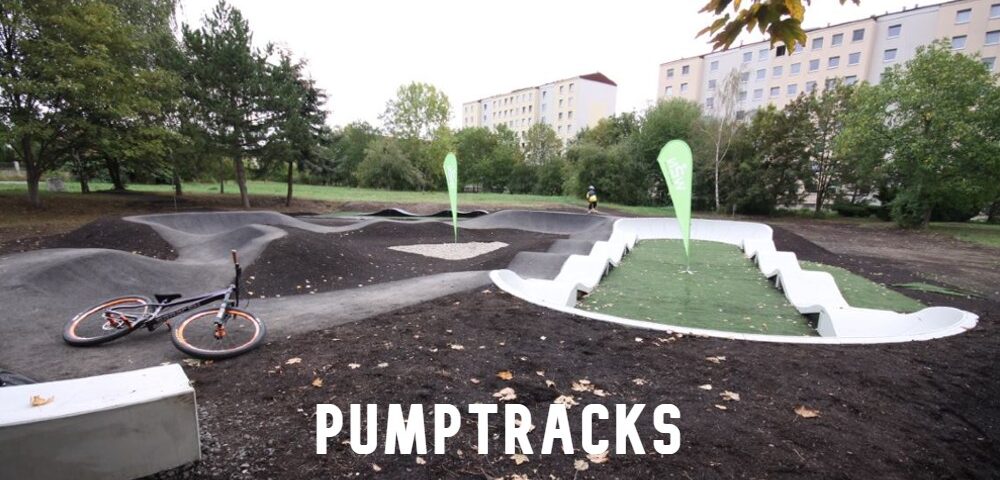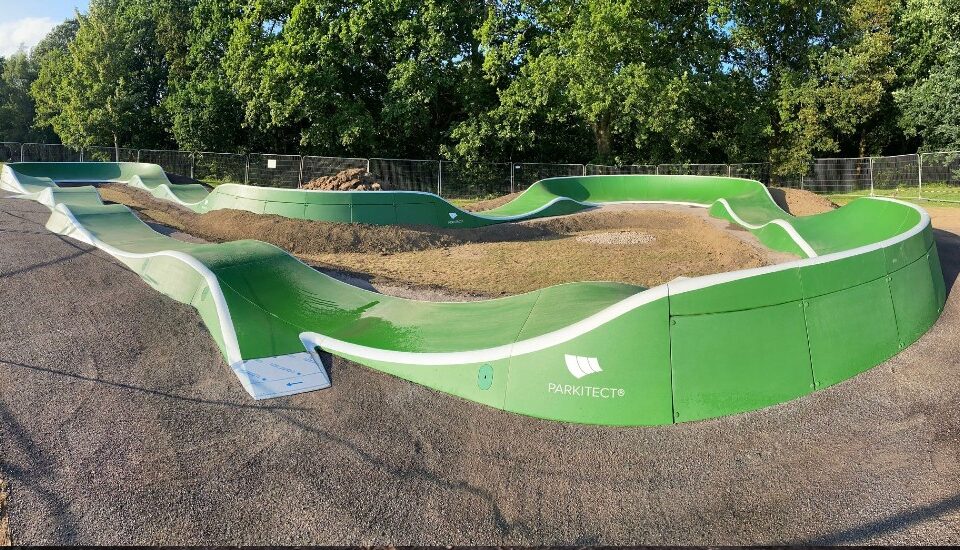
New MTB Trail Build by Dirt Factory Trail Team
01/11/2022
Cycling World Championships 2023, Scotland
28/02/2023
This article provides an overview of the key considerations along with costs when thinking about designing and building a pumptrack.
First of all, if you’re not sure what a pumptrack is, they are typically used for outdoor recreation and they are fun to ride for all ages and abilities, develop fitness, skills and coordination. They are built by forming a series of humps and bumps (rollers) and banked corners (berms) which link together to create a cycle track or circuit. The track can be ridden without pedaling by ‘pumping’ the bike in an up and down motion over the rollers rather than pedaling.
To work out how much a pumptrack will cost to build depends on multiple factors, listed below. Answers to these questions will help to inform design and ultimately costs.
- The location. Is it on private or public land? How much space do you have? What surrounds the land? Are there any site or access constraints that will impede the build process?
- Type of riding surface. There are four options; Dirt, Asphalt, Concrete or Reinforced Fibreglass. Which will suit your needs?
- Existing ground conditions. Can clean materials be won from site and reused or will all materials require importing? How much material is needed? Are additional drains and pathways required?
- Planning and design fees. Is planning permission required or already obtained? Planning may not be required on certain sites and for certain products.
Below our Trail Services team have put together an overview of the advantages and disadvantages of each pump track surface. But let’s be straight, any pumptrack built well (rollers and berms spaced properly and built to the correct specification to create ‘flow’) will feel great to ride no matter what surface material is used.
Essentially, before choosing the right solution, we believe it’s about making informed decisions. Therefore when deciding what pumptrack to build, your thinking process should absolutely be about finding a balance between what is best for the end users, stakeholders and the owners. The information provided is based on over 15 years of industry knowledge and experience building trails.

Asphalt 
Precast Concrete 
Fibreglass 
Dirt
Note: the costs below are based on a oval shaped pumptrack covering 150 square meters with circa 42 meters of ridable track. The more rollers, twists and turns added, the bigger the track will become and costs will increase.
| Surface Type | Pros | Cons | Costs (ex VAT) |
| Dirt (crushed limestone) | Natural / authentic feeling when riding on dirt. High grip surface. Commonly the cheapest construction method. | Not all wheel types can roll over dirt tracks e.g. scooters and skateboards with small wheels. Higher maintenance e.g. the top surface material will eventually erode ruining the flow of the pumptrack and therefore will require topping up. | £9,000 – £17,000 Costs will be towards the lower end if site conditions are good. Costs will increase if there are drainage issues and site constraints due to extra materials and labour being required. |
| Asphalt (Tarmacadam) | All wheels can roll over asphalt tracks e.g. bikes, scooters, boards and skates. Medium to long lifespan. Minimal maintenance. They look great when built correctly. High grip surface. | Commonly the most expensive solution due to expensive materials and labour costs. A lot more design and planning required, which can increase costs and consultant fees. | £38,000 – £45,000 Costs will be towards the lower end if site conditions are good. Costs will increase if there are drainage issues and site constraints due to extra materials and labour being required. |
| Precast Concrete (modular) | All wheels can roll over concrete tracks e.g. bikes, scooters, boards and skates. Long lifespan. 10 years guarantee. They look great. Minimal to zero maintenance. Medium grip surface. Modular tracks provide a tangible asset and they can be moved or sold on. Modular tracks can be easily expanded / added to or incorporated into other designs. Exact product costs are known because all modules are pre-engineered. A lot of the design fees are cut out. . | Not as grippy as dirt, asphalt or fiberglass when the surface is wet. Has to be installed on to solid ground e.g. stone or concrete base. Costs can mount up if adding extras such as custom colours and branding. Options for riders to get creative and transfer can be limited. | Standard model £37,500 Premium model £44,500 Price includes: Shipping Does not include: Groundworks (if required) Installation (if required) |
| Reinforced Fibreglass (modular) | All wheels can roll over fiberglass tracks e.g. bikes, scooters, boards and skates. They look great. Medium to long lifespan. High grip surface. Modular tracks provide a tangible asset and they can be moved or sold. Modular tracks can be easily expanded / added to or incorporated into other designs. Exact product costs are known because all modules are pre-engineered. A lot of the design fees are cut out. | There are lots of track layouts to choose from which can be sometimes overwhelming. Costs can mount up if adding extras such as custom colours and branding. Options for riders to get creative and transfer can be limited. | Standard model £26,000 Premium model £44,500 Price includes: Shipping. Does not include: Groundworks (if required). Installation (if required). Note: Assembly manuals are provided and are designed to be assembled by non-specialists. |





